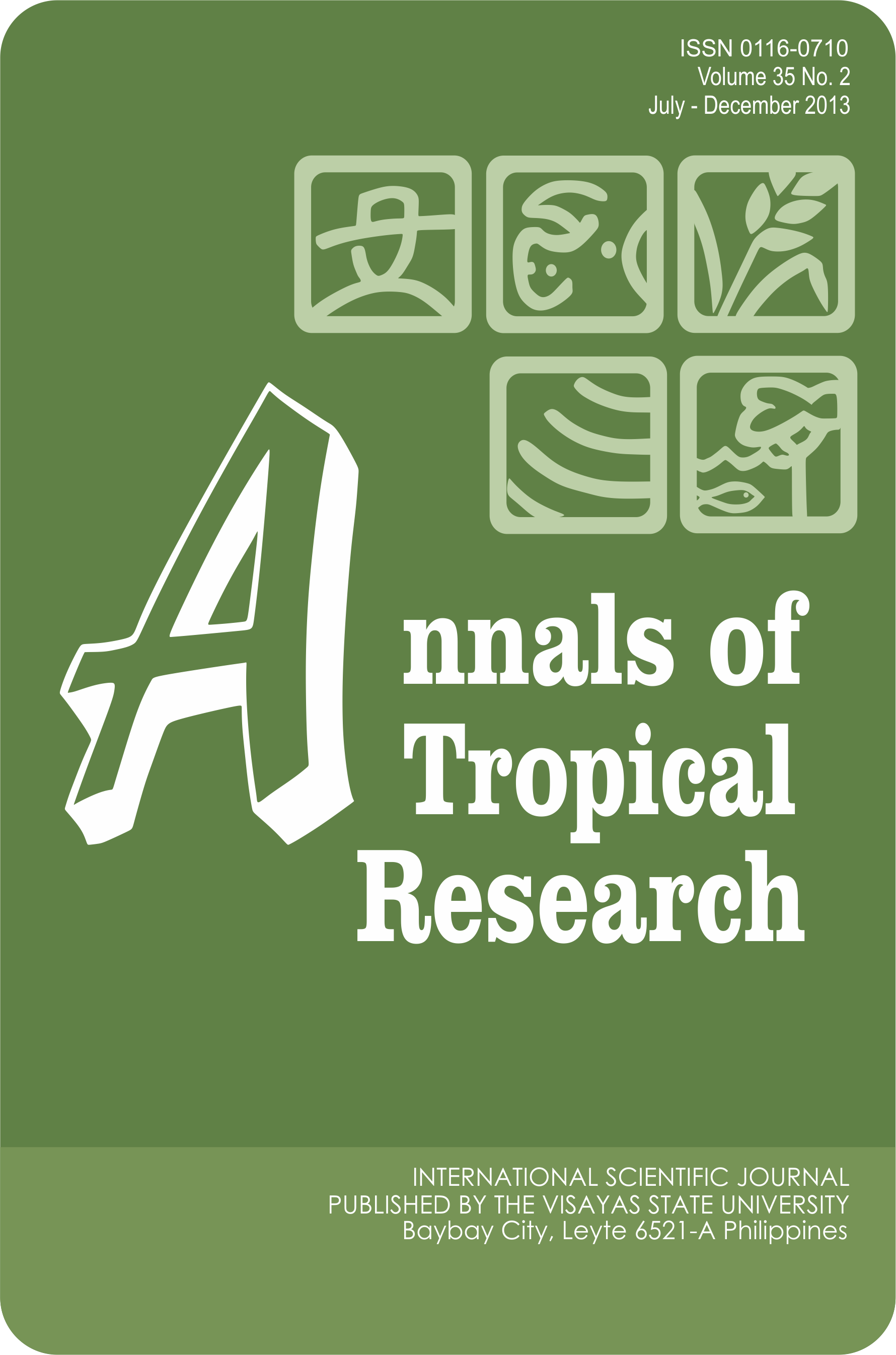Social Impacts of the Abaca Bunchy Top Disease and Adaptive Strategies of Farm Households: A Case in Leyte, Philippines
DOI:
https://doi.org/10.32945/atr3525.2013Keywords:
crop disease, cropping pattern, enterpriseAbstract
The abaca industry is in crisis because of the bunchy-top disease which has destroyed thousands of hectares of abaca (Musa textilis Nee). While government and research efforts are focused on the eradication of the disease, this study brings attention to the changes in people’s livelihoods and conditions due to the decline of their agricultural and economic productivity as well as their adaptive responses to these impacts and explanations for these. The income loss experienced by households when their crops were destroyed by the combination of the abaca bunchy top disease (ABTD) and inappropriate use of herbicides had secondary impacts to businesses in and near the village. The loss of income led to flow-on impacts on households’ food security, education, health and even psychosocial well-being. However, small landowning households (less than 10ha) were more affected than those with medium-sized farms (10-30ha) in that the changes they experienced were more severe in terms of the quality and quantity of their food and budget for their children’s education. Moreover, households’ access to resources influenced the kind of strategies they employed, with small landowners generally engaged in wage labor, credits and loans and small enterprises to earn income. Medium landowners were generally independent of loans and one such landowner was able to engage in a profitable new enterprise (furniture-making). This case study’s focus shifted from the disease to the affected population and their adaptive responses. Moreover, it looked at the affected population as a stratified society affected by and responding to a disaster differently according to their access to resources.
Downloads
Submitted
Published
How to Cite
Issue
Section
License

This work is licensed under a Creative Commons Attribution-NonCommercial-ShareAlike 4.0 International License.











